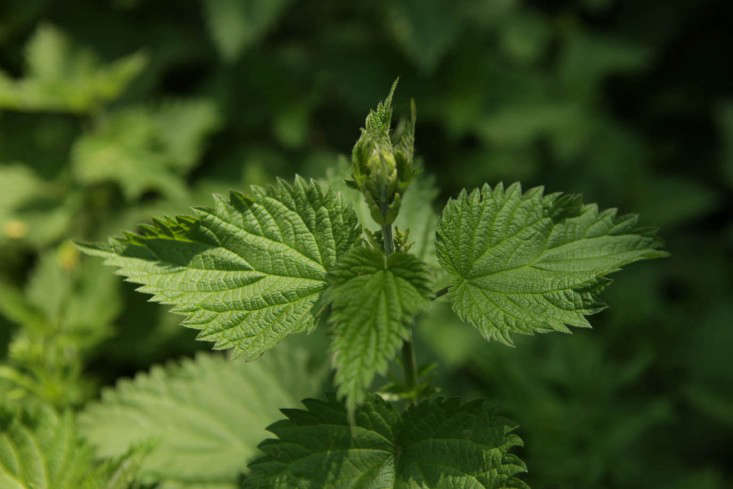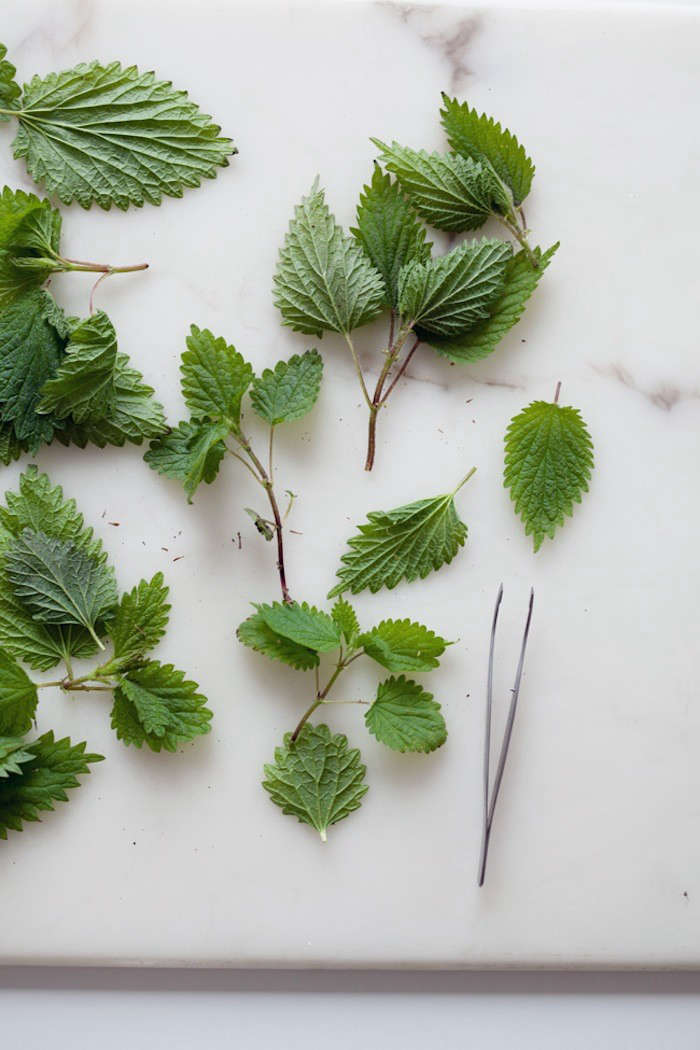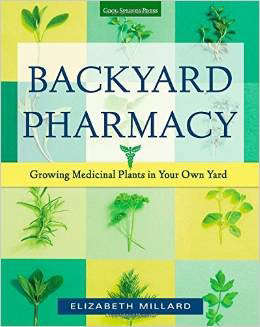On Instagram summer is on steroids–a season of endless backyard lawn parties, with a slant of sunlight at just the right angle to showcase the flowers, grass, and mojitos. Because, really, who takes photos of chapped lips and mosquito bites?
But summer has a downside too. The season can feel like a slog if you have allergies or have to slather moisturizer over a nasty sunburn.
Fortunately, your own garden can help you return to happy-photo land. My experiences as a farmer (I’m the co-owner of Bossy Acres in Minnesota) who leads workshops on herbs and grows organic seasonal produce led me to write my latest book, Backyard Pharmacy, which explains how to grow natural home remedies.
Here are five of my favorite healing plants–the basic ingredients in an all-natural First Aid kit:
Calendula

Above: For more, see 5 Veg Plot Must-Haves. Photograph by Howard Sooley.
One of the most-used medicinal herbs in history, calendula has been the stuff of legend, and not just for ailments. In the Middle Ages, it was rumored that if a girl walked barefoot on calendula petals, she would be able to understand the songs of birds. (Put that on your to-do list?)

Above: Photograph by Meredith Heuer.
Even if you’re not interested in conversing with sparrows, calendula is a standout choice to cure summer-related ailments such as chapped lips and dry skin. To make a salve, place some slightly wilted calendula flowers in a jar with olive oil and put in a warm, sunny location; shake once a day to speed the infusion process. After a few weeks, strain the oil and use for bruises, sore muscles, and dry skin. For an excellent lip balm, combine the infused oil with some grated beeswax and melt in a pot you don’t plan to use much, or microwave briefly in a glass container.
For step-by-step instructions, see DIY Natural Remedy: Calendula Oil from Obercreek Farm.
Plantains
Above: Photograph by Ernst Schütte via Wikimedia.
Often dismissed as a weed, plantain is likely growing within a short walking distance of where you’re sitting. This is a bold claim, but the plant is magnificently ubiquitous, even in the cracks of city sidewalks.
Use it to take the itch out of insect bites quickly by picking a few leaves (make sure they’re clean), and then popping them in your mouth to chew them into a mush. Really. Chewing helps to release the plant’s anti-inflammatory properties, and although it tastes slightly bitter, this is the easiest method of preparation. Then simply press it onto an insect bite or any other summer irritant like poison ivy or minor rashes.
Stinging Nettles

Above: For more, see Field Guide: Nettles. Photograph by Jim Powell for Gardenista.
Above: Another foraged find, nettles should absolutely not be popped into your mouth, or even handled without gloves. They earned that “stinging” name for a reason. Although not as prevalent as plantain, it’s still fairly easy to find nettles in many parts of the country, and they’re easy to spot thanks to their sawtooth-type leaves.

Above: Photograph by Aran Goyoaga.
Nettles are very effective for seasonal allergies, and are usually used in tea form or can be lightly steamed or blanched to throw into culinary dishes. To create an allergy-busting tea, pick the leaves and set out to dry for a few days. Then simply crumble them and put them in a teabag, or pour hot water over them and strain after a few minutes of steeping.
Raspberries

Above: Photograph by Marie Viljoen.
Sometimes described as “the woman’s herb”–even though that sounds like a cheesy 1970s filmstrip–raspberry is a potent tonic for ailments such as menstrual cramps. But a tea made from the leaves can address a range of other troubles as well, including leg cramps and nausea.
After making a particularly strong summer brew, which means pouring just-boiled water over dried or fresh raspberry leaves and allowing it to steep for 15 minutes, you also can create a sunburn remedy by soaking a clean cloth in the liquid and placing that over burns.
Raspberries are easy to grow, and are suited for both cooler and warmer climates. A quick note on varieties: There are two types of raspberries, the summer-bearing kind best known for bearing a single, luscious crop in midsummer, and a second type with two growing periods (one in early summer and another in fall). Planting a couple of different types can keep you awash in raspberries as well as medicinal leaves, which can be dried and stored to be used throughout the year.
Catnip

Above: Photograph via Coneflower Tarot.
Although most people think of catnip as the equivalent of kitty marijuana, the herb has been valued as a medicinal for humans since it was cultivated in Roman times. The dried leaves were once smoked to relieve stress, and fresh leaves used to reduce fevers, calm headaches, and soothe upset stomachs. Plus, it has a nicely minty taste when you make it into tea.
To combat summer ailments, though, this is one plant that you may want to consider planting near your deck instead of ingesting. The essential oil in catnip (called nepetalactone) gives the plant the distinctive aroma that attracts cats–and also repels mosquitos. In a presentation at the American Chemical Society, researchers noted that catnip is 10 times more effective at repelling mosquitoes than DEET, the controversial compound used in most commercial insect repellants.
You also can use the plant as a quick-fix mosquito remedy by picking a few leaves, crushing them slightly, and rubbing them on your skin. Do a test patch first, however, because plants sometimes can cause minor allergic reactions; the last thing you want is to find yourself running toward the raspberry leaves or calendula for relief from a catnip rash.

Above: Backyard Pharmacy is $18.88 from Amazon.
For more natural remedies, see:
- Stop the Itch: DIY Mosquito Repellent.
- DIY: Propagate Aloe to Soothe Sunburns.
- Miracle Cure for Allergies: Gentle Nettle Tea.













Have a Question or Comment About This Post?
Join the conversation (0)